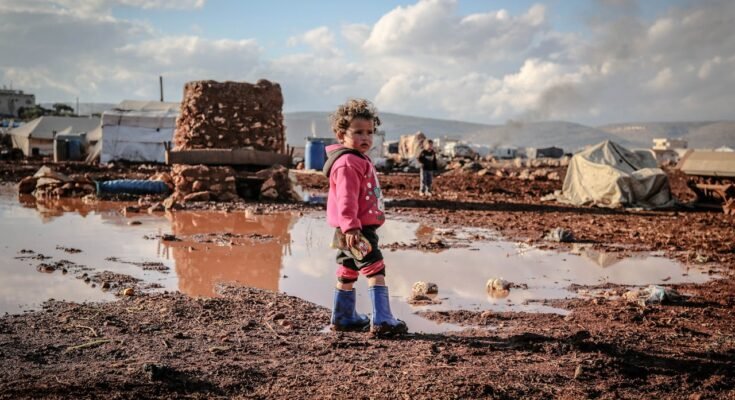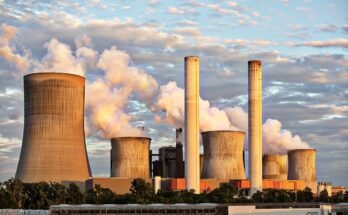are great resources of human livelihood. But the rapid devastation of wooded landscapes is threatening not only the survival of these ecosystems, but also the survival of untold numbers of species —- humans included.
What is Deforestation?
What is deforestation?Felling and clearing of forests is referred as deforestation, particularly for agricultural, urban and industrial development. Destruction of the natural world equals biodiversity loss, disrupted water cycles and increased atmospheric carbon dioxide levels — major drivers of climate change.
Causes of Deforestation
Deforestation is caused by human as well as natural factors — both have a multiplier effect on the other. Here are some of the main reasons:
- Agriculture and Cattle Ranching: The demand for agricultural land, especially land for cattle grazing or crops like soy, palm oil and coffee, is among the top drivers of deforestation. Extensive areas of forest are wiped out for monocultures, destroying intricate ecosystems.
- Logging: The timber industry is a significant reason for deforestation too. Tree-studs have always been in great demand: logging—legal and illegal—targets sought after hardwoods and forest produce, fuelling unsustainable practices that leave swathes of land bereft of greens.
- Urbanization and Infrastructure Development: The increasing global population is putting pressure on housing, roads, and other infrastructures. Many urban areas are often cleared of forest in order to make way for expanding cities and towns, contributing to significant habitat loss.
- Mining: The harvesting of valuable minerals, metals, and fossil fuels from forested regions tends to lead to the destruction of massive areas of forests. This practice clears land but can also contaminate water sources and soil.
- Fires: In some cases forest fires are deliberately set for agricultural reasons or the growing urban areas. At the same time, climate change is spreading and intensifying natural wildfires.
- Climate Change: Climate change, can be caused by deforestation as well, but it can also make the situation worse. Changing rainfall patterns and longer droughts can stress forests, rendering them more susceptible to fires and pests, which in turn hastens deforestation.
Effects of Deforestation on the Environment
Deforestation has far-reaching environmental consequences that are costly to both local and global ecosystems. Among the most serious effects are:
- Loss of Biodiversity: More than 80% of the world’s terrestrial species of animals, plants, and insects live in forests. Deforestation ruins these homes, sending many species on the path toward extinction. For example, iconic animals such as the orangutan in Southeast Asia have become ever more endangered as their forest homes have been cleared for agriculture.
- Climate Change: Forests absorb carbon and contribute to mitigation of growth in global warming. And when trees are felled or burned, they release that stored carbon into the air, adding to climate change. The loss of forests, then, both compounds global warming and diminishes nature’s power to fight it.
- Disruption of Water Cycle: Forests are vital in regulating the water cycle by stabilizing soil, maintaining rainfall, and controlling water flow. It also can reduce rainfall, contribute to soil erosion and cause increased flooding, affecting agriculture and local communities.
- Soil Degradation: Trees and plants prevent soil erosion by anchoring the soil with their root systems. Soil is then more exposed to erosion and degradation without trees, rendering the land less viable for farming and further damaging ecosystems.
Impacts on Society and Economy
Deforestation has negative influences beyond environmental impacts. There are also huge social and economic effects:
- Effects on Independence and Woods Pursuit: Numerous natives utilize woods for their livelihood, culture, and nourishment. As their forests are cleared, so too are these communities, often losing their homes, resources, and traditional ways of life in the process.
- Economic Losses: Deforestation creates short-term economic benefits from logging and agriculture, but has much more detrimental long-term effects. Deforestation can cause declining agricultural productivity, natural disasters, and depleting resources that are crucial for sustainable economic development.
Preventing DeforestationOther Interventions
To combat deforestation, we must unify the world and rekindle sustainable practices within us, securing institutions, NGOs and law enforcement efforts to support our vision of a better world. There are several projects and measures being taken to curb deforestation and its consequences:
- Supporting Sustainable Agriculture: Sustainable farming practices that do not require deforestation, like agroforestry or crop rotation, may help keep the forests intact while also receiving economic development. Also, by helping to develop plant-based alternatives to palm oil and other products, this can help reduce the demand for land clearance.
- Reforestation and Afforestation: Efforts to plant new trees and restore damaged areas can mitigate some of the impacts of deforestation. Reforestation projects are being planned across the world as governments, NGOs and local communities invest in restoring lost ecosystems and improving carbon sequestration.
- Legislation and Enforcement: Governments worldwide have enacted laws and policies to minimize deforestation. Such measures may include prohibiting illegal logging, establishing protected forest areas and regulating land use. However, in much of the world enforcement is still lax, and illegal practices continue.
- Consumer Awareness and Corporate Responsibility: People can also do their part as consumers by buying goods that are made sustainably and avoiding products tied to deforestation, like unsustainable palm oil or beef. In fact, businesses have a duty to ensure that they are not sourcing products linked to deforestation in their supply chains.
- Global Efforts: Worldwide programs like the United Nations’ REDD+ (Reducing Emissions from Deforestation and Forest Degradation) seek to decrease deforestation through financial incentives to developing nations that conserve their forests.
Conclusion
Deforestation is a complex and pressing problem that impacts the planet’s biodiversity, climate and communities. While the challenges are enormous, the increased awareness and action among governments, organizations, businesses and individuals can be a source of hope. We can protect the forests that sustain life on Earth by working together to adopt sustainable practices, enforce regulations, and support reforestation projects. But as the global surge in agricultural commodity prices fuels this unprecedented wave of deforestation, the time left to reverse this crisis is limited: urgent and courageous action is needed if we are to protect a sustainable future for the Earth and its people.



